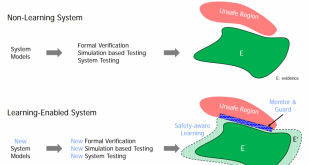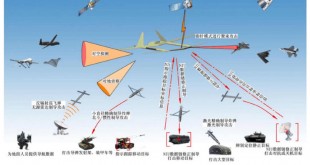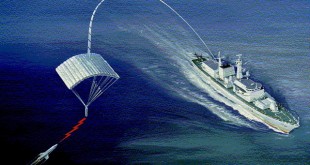Russia, has displayed jamming and spoofing capabilities in the ongoing conflicts in Ukraine and Syria in the last several years. The use of Russian technology in these conflicts demonstrated that Russia retains advanced electronic warfare capabilities. Russia has deployed Electronic Intelligence (ELINT) and SIGINT aircraft, such as the Il-20, …
Read More »Yearly Archives: 2018
DARPA’s M3IC developing critical magnetic components for future AESA based radars, communication and electronic warfare systems
Next-generation radar systems are critical to providing situational awareness of the entire networked battlefield. Active Electronically Steered Array (AESA) antennas have revolutionized the performance of modern radars, communication and electronic warfare systems by greatly reducing the maintenance costs and failure rates, enhancing scanning speed and accuracy, more resistant to interference …
Read More »DARPA investing in breakthrough camera technologies like 4D camera, seeing around corners and digitally mapping the room for urban and unconventional warfare
Urban Warfare Operations are complicated by a three-dimensional environment, limited fields of view and fire because of buildings, enhanced concealment and cover for defenders, below-ground infrastructure, and the ease of placement of booby traps and snipers. DARPA is investing in many novel camera technologies . In the event of urban …
Read More »US and UK Airforce deploying Next Generation Identification Friend or Foe (IFF) technology for rapid engagement of enemy aircraft, and reduce risk to friendly aircraft.
IFF (Identification Friend or Foe) is the military designation of the Air Traffic Control (ATC) System that is used to identify and track military aircraft. It enables military and civilian air traffic control interrogation systems to identify aircraft, vehicles or forces as friendly and to determine their bearing and range …
Read More »Future infantry squads shall be equipped with lighter, Safer, programmable but more lethal ammunition
U.S. Army small-arms experts recently laid out a blueprint of future small-arms goals that would equip infantry units with several new weapons, ranging from a new squad automatic rifle to a new shoulder-fired, anti-armor weapon. The service plans to equip infantry squads with lighter, more effective small arms. The …
Read More »New class of Electronics: Biodegradable, Transient, Self Destructing for Security and Biomedical applications
Consumer electronics constitute a rapidly increasing source of waste. Cell phones, tablets and the like are typically made of non-renewable, non-biodegradable, partly environmentally toxic materials. A report from United Nations University (UNU) found that the world produced 41.8 million metric tons of e-waste in 2014 – an amount that would …
Read More »DARPA Assured Autonomy Seeks to guarantee Safety of Autonomous Systems that leverage capabilities of machine learning
DARPA has launched a new research program called Assured Autonomy that aims to advance the ways computing systems can learn and evolve to better manage variations in the environment and enhance the predictability of autonomous systems like driverless vehicles and unmanned aerial vehicles (UAVs). “Tremendous advances have been made …
Read More »Counter stealth radars on China’s High-altitude Long-endurance drones is enhancing its A2/AD capability
Situational awareness of potential hostile targets and of friendly forces is considered to be a key component in obtaining and sustaining military superiority over adversaries. Airborne Early warning and control (AWACS) aircraft has been providing a real-time picture of friendly, neutral, and hostile air and maritime activity under all kinds …
Read More »Automated AI based soft kill countermeasures including electronic attack and cyber weapons will protect Warships from future missile threats
Naval Warships now faces wide spectrum of threats from hypersonic missiles, ballistic and cruise missiles, cavitating torpedoes, rail guns, lasers and UAVs. Anti-Ship Missiles are guided missiles most of them of the sea skimming variety, and many use a combination of inertial guidance and active radar homing. A good number …
Read More »Air Force to spend $950 million on Autonomous technologies Research to enable its Anti-access and area denial (A2/AD) missions
The Air Force is looking to increase the use of autonomous technology and has released a Broad Agency Announcement for industry participation, according to a July 7 agency notice. The objective of Science and Technology for Autonomous Teammates (STAT) program is to develop and demonstrate autonomy technologies that will enable …
Read More » International Defense Security & Technology Your trusted Source for News, Research and Analysis
International Defense Security & Technology Your trusted Source for News, Research and Analysis









